
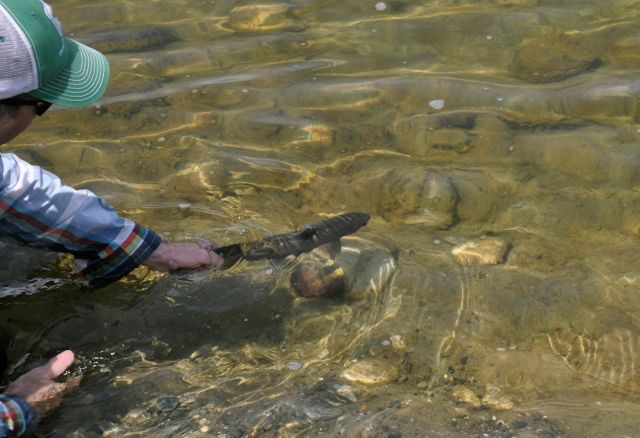
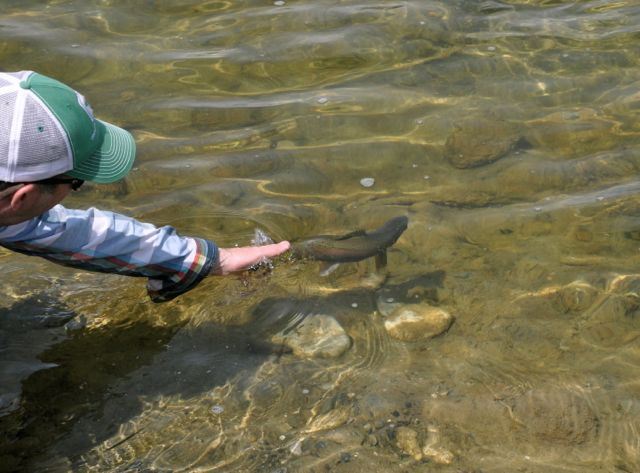

Have you been thinking about taking a fly fishing road trip? The Bighorn River in Montana is one to add to the list of potential front-runners if you don’t mind a big drive, big fish, and sharing some elbow room between the banks.
The Bighorn River was first discovered by Westerners and named in 1805 and runs approximately 461 miles from Wyoming into Montana. It is a tributary of the Yellowstone River and takes its namesake from the Bighorn Sheep that roamed its’ banks when first explored by French fur traders.
With some sections of the river boasting 5000+ fish per mile, the Bighorn should be on your “must fish” list at some point.
I made this road trip in mid May and got a small taste of what the Bighorn was all about. To say that I was impressed with this river is an understatement. I’m not sure I can recall a time where I saw more fish-per-mile in a public section of river. In addition to being stacked with rainbow and brown trout, the Bighorn River is a bug FACTORY. There were copious amounts of midges coming off all day. When the wind died down I saw Blue Wing Olives and fish quickly began feeding on the surface.
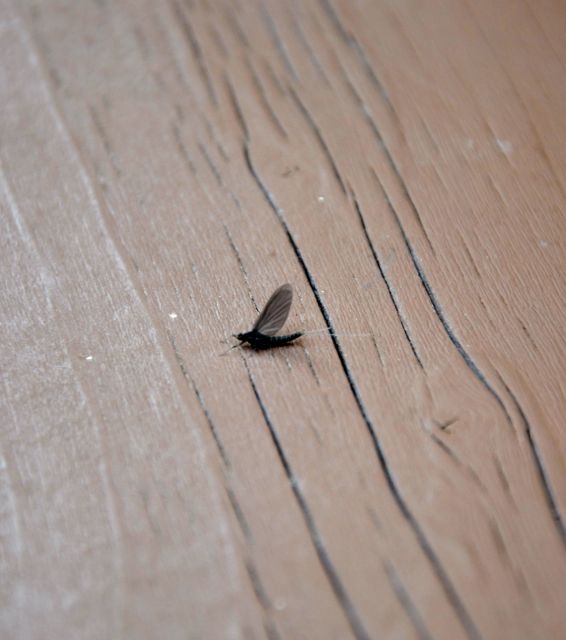
The most productive flies for me seemed to be any small midge nymphs in black in size 20 or 22. I also had luck with the Stone Bomb as an attractor and lit them up with a size 22 Rojo Midge.
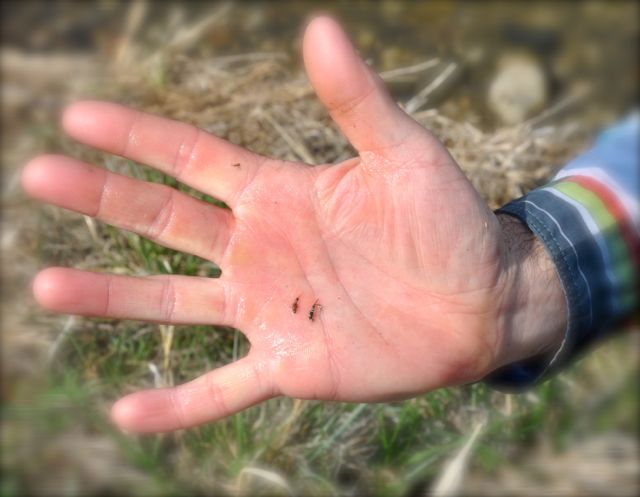
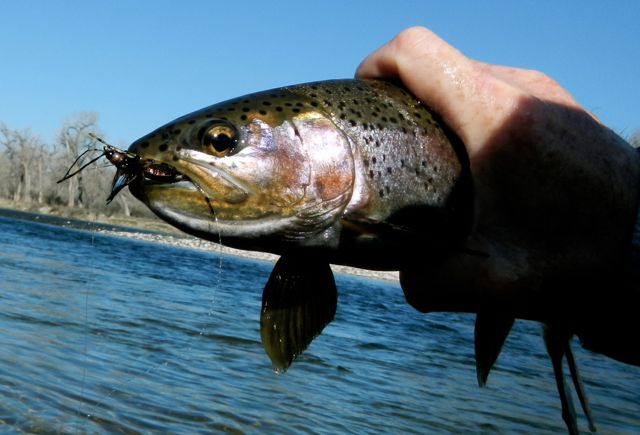
This section of the Bighorn that flows out of Bighorn Reservoir is primarily known as a float/fish destination. If you have a boat or raft, hitch it up and haul it. If you don’t have a boat, there are a number of companies that will take you out for a fully day guided float trip (~$425/day for two anglers).
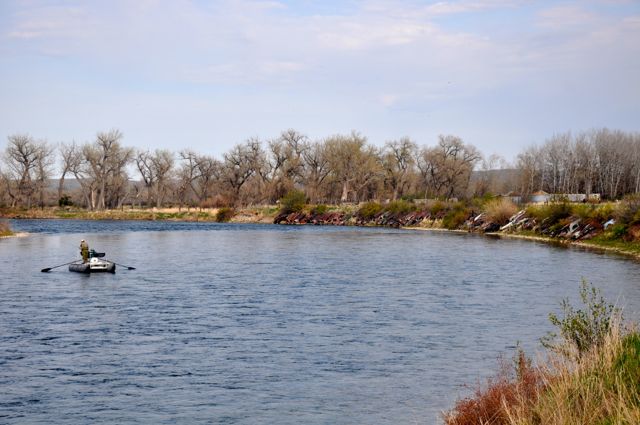
Another option (if you have basic oar skills) is to rent a drift boat and shuttle service (~$125 for boat rental and shuttle).
When I recently visited the Bighorn I stayed at the Cottonwood Camp, just three miles outside of Fort Smith. This is a great HQ if you are visiting this fishery for the first time. Cottonwood Camp provides quite a few options. First, the they have a number of cool no-nonsense cabins less than a ¼ mile from the river. The cabins range in size – they are basic, clean, and get the job done. They also offer guided trips, shuttle services and boat rental – and they have a fly shop where you can pick up a Montana Fishing license conveniently. If you want to camp tent sites are only $15 bucks and you get access to shower facilities. If you have a camper, they also have sites with electric, water, and sewer facilities.
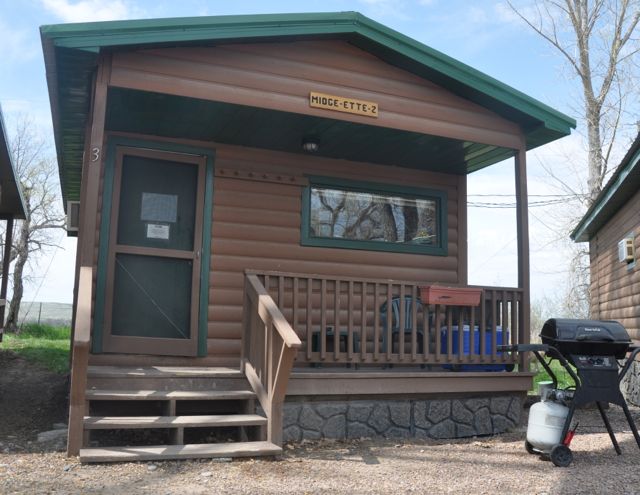
Another very cool component of staying at the Cottonwood Camp is that you can walk down to a public section of water and walk/wade within minutes of your tent or cabin. At the west end of the Three Mile Parking Area you can follow the gravel path along the Bighorn River. This section of the river has a number of river braids and islands that were easily accessible with the water around ~2000 CFS. Montana River Access Laws limit public access to rivers on private land at posted access sites, and restricts river use to floating the river and wading access to the high water mark. Make sure you bone up on how Montana’s River Access Laws work – and definitely give wading the Bighorn a try if you get the opportunity.
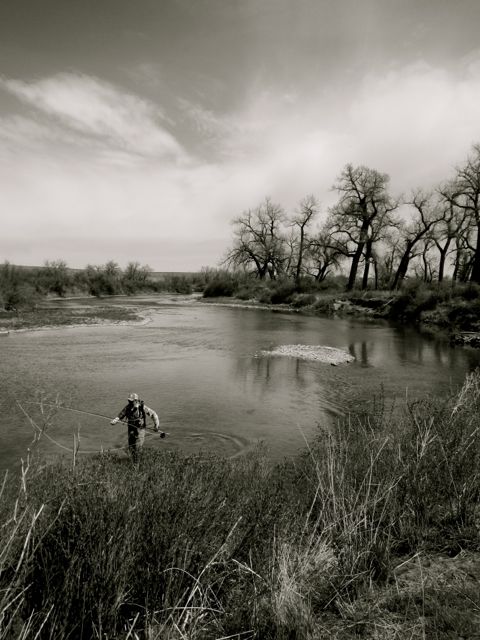
Chuck Robbins who wrote the Fly Fishers Guide to Montana sites the peak season of this section of river to be July, August and September. “Historically, browns and rainbows average 15 to 18 inches, although of late… the average has jumped up a bit, probably closer to 18-20 inches,” said Robbins in his book. “These are robust fish, among the fattest, broadest-shouldered, strongest-fighting trout anywhere.”
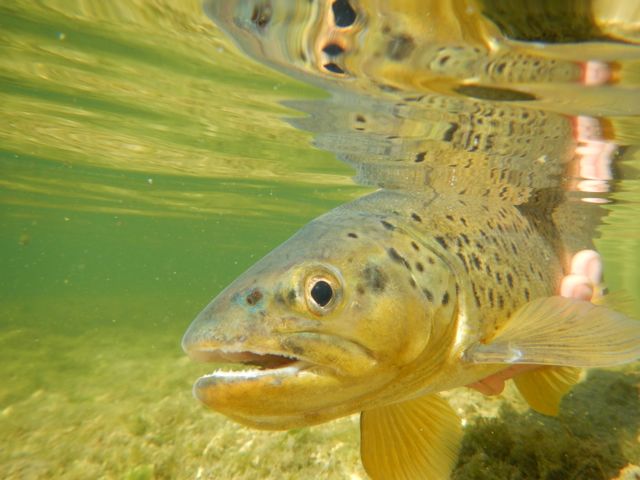
I saw fish in the 18-20 inch range – and bigger. They did have big shoulders and could fight – I felt a bit under gunned with a Sage ONE four weight, a five or six weight would have been more appropriate.
One thing to note: if you are looking for a fishery with a low amount of competition or get annoyed easily when you are forced to share the water, the Bighorn might not be your choice destination. Make no mistake, the same reasons that make this fishery a jaw dropper – big rainbow and brown trout, some pushing six to seven pounds and beyond – also make this a very busy river. If you do some additional research do not be shocked to find the words “Bighorn River”, “Fishing Pressure”, and “Intense” all in the same sentence.
Ft. Smith Montana is a solid eight or nine hour drive from Denver depending how far you suppress the pedal to the medal. The drive takes you due north on I-25 past Casper, Wyoming and the North Platte River to the junction of I-90 W. From there, continue past Sheridan, Wyoming to the Lodge Grass exit where you’ll head west to the outskirts of Ft Smith and the Cottonwood Campground.

We plan to continue our “Summer Road Trip” series in 2013. Last year we covered the Green, North Platte, San Juan, and Snake Rivers just to name a few. Where do you want to go? If you are planning a trip and looking for a little additional boots-on-the-ground information give the shop a call at 877.464.0034.












